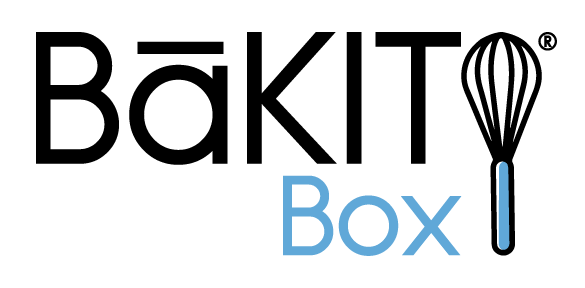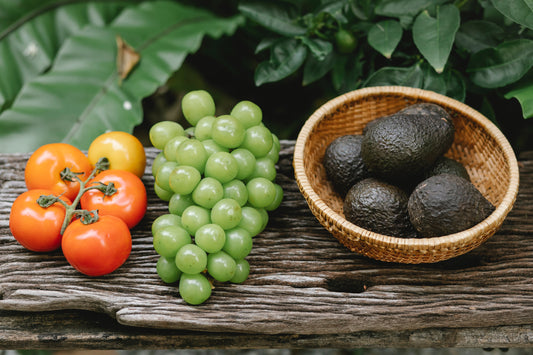Baking is a very precise culinary art with lots of idiosyncrasies, from ensuring accurate measurements to mixing ingredients in the correct order. Many factors can affect the outcome of your baked goods, including oven temperature. Read on to discover why oven temperature is important, and how different types of ovens can have an effect on how your baked goods turn out.
Oven Temperatures for Baking
Below is a chart that shows general temperature ranges and times, depending on what you’re baking. However, always follow the recipe you’re using and set the oven temperature to whatever the recipe calls for.
|
Temperature (°F) |
Minutes |
| Breads |
|
|
| Biscuits |
425–450°F |
10–15 |
| Popovers |
375°F |
60 |
| Yeast Bread |
400°F |
50–40 |
| Cakes |
|
|
| Cupcakes |
350–375°F |
15–25 |
| Layer Cakes |
350–375°F |
20–55 |
| Angel Food/Sponge |
350°F |
10–15 |
| Cookies |
425–450°F |
10–15 |
| Scooped |
425–450°F |
10–15 |
| Rolled Out |
425–450°F |
50–60 |
| Pastries |
|
|
| Pie Crust |
450°F |
10–12 |
| Pie Crust with Filling |
400–425°F |
45–55 |
Again, keep in mind that these are general temperatures and times. Always follow the instructions on the recipe.
325°–350°F
This is the most common temperature range you’ll see in baking recipes because of a scientific phenomenon known as the Maillard reaction. Scientifically, the Maillard reaction is a form of non-enzymatic browning, similar to caramelization. It’s a chemical reaction that occurs between protein and sugar that turns food brown and gives it a delicious flavor. It usually only occurs at or above 300°F. The 325° to 350°F temperature range is ideal for cooking something low and slow, like a roast. It’s also ideal for baking cakes, since they contain lots of sugar — any hotter and the exterior of the cake would bake faster than the interior, leaving it burnt on the outside and gooey on the inside.
375°–400°F
This is the ideal temperature range for cookies. They don’t need to be baked very long, but at this temperature the oven is hot enough for the cookies to get nice and crisp on the outside without burning.
425°–450°F
This slightly higher temperature gives your food a nice, golden color without you having to bake it for too long. Puff pastry needs to be baked at this temperature range in order for the water in the dough to turn into steam and release, thus puffing up the pastry.
475°–500°F
This is the hottest temperature you’ll be able to turn your oven to. Baking pizza and bread at this high temperature ensures that the dough rises before the gluten sets. See the chart below for a guide to oven temperatures, and to convert Fahrenheit to Celsius, or vice versa:
| Fahrenheit (°F) |
Celsius (°C) |
Gas Number |
Oven Terms |
| 225°F |
110°C |
1/4 |
Very cool |
| 250°F |
130°C |
1/2 |
Very slow |
| 275°F |
140°C |
1 |
Very slow |
| 300°F |
150°C |
2 |
Slow |
| 325°F |
165°C |
3 |
Slow |
| 350°F |
177°C |
4 |
Moderate |
| 375°F |
190°C |
5 |
Moderate |
| 400°F |
200°C |
6 |
Moderately hot |
| 425°F |
220°C |
7 |
Hot |
| 450°F |
230°C |
8 |
Hot |
| 475°F |
245°C |
9 |
Hot |
| 500°F |
260°C |
10 |
Extremely hot |
| 550°F |
290°C |
10 |
Broiling |
What’s the difference between convection baking and regular baking?
Convection and conventional ovens generally look the same and can be either gas or electric powered.
Convection ovens
Convection ovens have fans that blow the heat around the oven to ensure a consistent temperature throughout. Not only are convection ovens more consistently heated throughout, but they also tend to cook or bake food faster — as much as 20% faster. This takes some time getting used to, especially if you’ve only used conventional ovens before. The cooking or baking time might be shorter than what’s called for in the recipe, so try and check your food about 10 minutes before the cooking time is up.
Conventional ovens
Conventional ovens have a stationary heat source that rises up from the bottom — consequently, different sections of the oven may have different air temperatures. This can be remedied, for example if you’re baking cookies, by turning the cookie sheet around halfway through baking to ensure they’re baked evenly.
Are gas or electric ovens better for baking?
The main difference between gas and electric ovens is their source of heat. One is gas-powered and the other is electric-powered. While neither a gas or electric oven is better than the other, per se, they each have their own pros and cons when it comes to baking.
Baking With a Gas Oven
Gas ovens heat up faster, however they may heat up unevenly or have “hot spots” in different areas. Older (and some newer) gas ovens might be more humid than electric ovens, and the temperature may fluctuate as well. The humidity may affect the desired golden brown-ness or crispiness of your baked goods. To remedy some of these issues you may encounter with a gas oven, always rotate your pan halfway through the baking process so that your item bakes evenly. Also, for crispier edges, place your baking tray on the top rack, because heat rises.
Baking With an Electric Oven

Unlike gas ovens, which tend to run humid, electric ovens can sometimes dry out your food. If you encounter this issue, you can try putting a pan of water in the oven during the baking process to create vapor, or lightly spray your baked goods with water. The dryness of electric ovens makes for extra crispy cookies and bread crusts, which are sometimes harder to attain with gas-powered ovens. Electric ovens take a longer time to heat up. Any time you start a recipe, the first step you should take is to preheat your oven to make sure it’s the right temperature when you’re ready to bake. Also, always place your tray on the middle rack so that your baked goods cook evenly. Oven temperature is not always as straightforward as turning the knob to a specific temperature. The make and model and the type of oven you have (convection or conventional, gas or electric) can also have an impact on how your baked goods turn out. Don’t be afraid to experiment; if a cake comes out dry, try baking it with a pan of water the next time you’re making a cake. Baking is a science, after all!
Sources: https://www.realsimple.com/food-recipes/cooking-tips-techniques/best-oven-temperature https://www.joyofbaking.com/OvenTemperatures.html https://www.ajmadison.com/learn/whats-the-difference-between-a-convection-oven-and-a-conventional-oven https://www.thekitchn.com/5-important-things-to-know-about-baking-in-a-gas-oven-226270 https://thebreadguide.com/electric-vs-gas-oven/ https://www.tasteofhome.com/article/the-scientific-reason-we-always-preheat-the-oven-to-350-when-we-bake/ https://www.degraeve.com/reference/cake-baking-temperatures-times.php Image credits: Shutterstock Featured image Image 2
 Unlike gas ovens, which tend to run humid, electric ovens can sometimes dry out your food. If you encounter this issue, you can try putting a pan of water in the oven during the baking process to create vapor, or lightly spray your baked goods with water. The dryness of electric ovens makes for extra crispy cookies and bread crusts, which are sometimes harder to attain with gas-powered ovens. Electric ovens take a longer time to heat up. Any time you start a recipe, the first step you should take is to preheat your oven to make sure it’s the right temperature when you’re ready to bake. Also, always place your tray on the middle rack so that your baked goods cook evenly. Oven temperature is not always as straightforward as turning the knob to a specific temperature. The make and model and the type of oven you have (convection or conventional, gas or electric) can also have an impact on how your baked goods turn out. Don’t be afraid to experiment; if a cake comes out dry, try baking it with a pan of water the next time you’re making a cake. Baking is a science, after all! Sources: https://www.realsimple.com/food-recipes/cooking-tips-techniques/best-oven-temperature https://www.joyofbaking.com/OvenTemperatures.html https://www.ajmadison.com/learn/whats-the-difference-between-a-convection-oven-and-a-conventional-oven https://www.thekitchn.com/5-important-things-to-know-about-baking-in-a-gas-oven-226270 https://thebreadguide.com/electric-vs-gas-oven/ https://www.tasteofhome.com/article/the-scientific-reason-we-always-preheat-the-oven-to-350-when-we-bake/ https://www.degraeve.com/reference/cake-baking-temperatures-times.php Image credits: Shutterstock Featured image Image 2
Unlike gas ovens, which tend to run humid, electric ovens can sometimes dry out your food. If you encounter this issue, you can try putting a pan of water in the oven during the baking process to create vapor, or lightly spray your baked goods with water. The dryness of electric ovens makes for extra crispy cookies and bread crusts, which are sometimes harder to attain with gas-powered ovens. Electric ovens take a longer time to heat up. Any time you start a recipe, the first step you should take is to preheat your oven to make sure it’s the right temperature when you’re ready to bake. Also, always place your tray on the middle rack so that your baked goods cook evenly. Oven temperature is not always as straightforward as turning the knob to a specific temperature. The make and model and the type of oven you have (convection or conventional, gas or electric) can also have an impact on how your baked goods turn out. Don’t be afraid to experiment; if a cake comes out dry, try baking it with a pan of water the next time you’re making a cake. Baking is a science, after all! Sources: https://www.realsimple.com/food-recipes/cooking-tips-techniques/best-oven-temperature https://www.joyofbaking.com/OvenTemperatures.html https://www.ajmadison.com/learn/whats-the-difference-between-a-convection-oven-and-a-conventional-oven https://www.thekitchn.com/5-important-things-to-know-about-baking-in-a-gas-oven-226270 https://thebreadguide.com/electric-vs-gas-oven/ https://www.tasteofhome.com/article/the-scientific-reason-we-always-preheat-the-oven-to-350-when-we-bake/ https://www.degraeve.com/reference/cake-baking-temperatures-times.php Image credits: Shutterstock Featured image Image 2







1 comment
This is my comment.